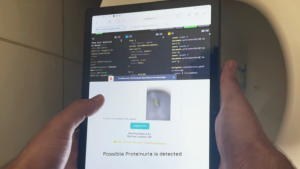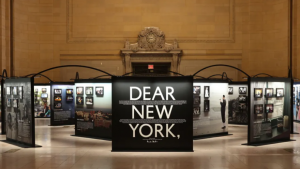
According to the Autism Society, autism affects approximately one per cent of the global population. A neurodevelopmental disorder, it affects sufferers on a spectrum and can manifest itself differently from one person to the next. The social challenges that accompany the condition can make it difficult for the community to form meaningful connections, often leading to isolation and alienation. An Empathy Bridge for Autism is a toolkit that aims to facilitate the development of these connections in the hopes of building more inclusive communities.
Royal College of Art student Heeju Kim created the kit as part of her Master's Degree in Design Products. She grew up with an autistic brother and acknowledges that her understanding of what he felt was limited and that this circumstance adversely affected her interactions with him. As a way to further general understanding of the autistic community and to make communication with them less complicated, Kim designed a product that would prioritise empathy.
Autism is characterised by difficulties in behaviour, social interaction, communication and sensory sensitivities. Each module of Kim’s toolkit is designed to emulate these struggles and evoke a similar sensation felt by the sufferer. "Every noise and sound are magnified, distorted and muddled so that it is very hard to make a conversation while using the tool," she explained to Dezeen. "People with autism are sometimes unable to block out background noise.”


Comprised of three different components – a virtual reality cardboard box that covers the eyes and a specially designed app for smartphones that together reproduce the autistic vision; earphones that emulate deafness and oversensitive hearing in autism; and a disposable tongue-tying candy, which hinders pronunciation – the kit is made from low-cost materials as a way of making the it easier to produce and share with a larger audience. Kim also made sure that the pieces in the kit were produced in low-arousal colours as bright colours can sometimes overstimulate people on the spectrum. The result is a sensory overload evocative of the autistic experience.
“I felt like I almost couldn’t hear my own thoughts and what I was feeling,” noted one user after using the VR tool and earphones. “I felt quite isolated… I didn’t realise it would be as overwhelming as it was.”
Expressing the kind of empathy that Kim hoped the product would evoke, another user commented, “It must be hard to get up every day and have to face the world with those drawbacks because you can’t hear as you should hear it, you can't see the world as you should see it, and you can’t speak how everyone else expects you to.”
The Autism Empathy Toolkit formed part of the 2016 Dubai Design Week Global Grad Show and Kim hopes that school students and the families and carers of autistic children will use it to help better relate to one another.






